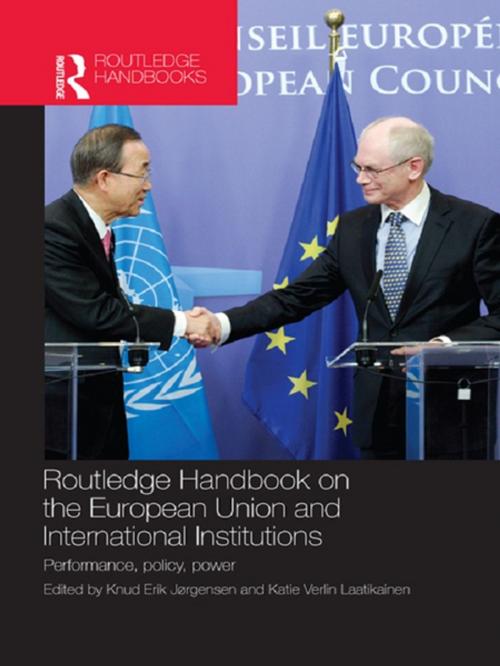Routledge Handbook on the European Union and International Institutions
Performance, Policy, Power
Nonfiction, Social & Cultural Studies, Political Science| Author: | ISBN: | 9781136186493 | |
| Publisher: | Taylor and Francis | Publication: | December 12, 2012 |
| Imprint: | Routledge | Language: | English |
| Author: | |
| ISBN: | 9781136186493 |
| Publisher: | Taylor and Francis |
| Publication: | December 12, 2012 |
| Imprint: | Routledge |
| Language: | English |
While the EU has championed "effective multilateralism" and experienced a dramatic internal reform process to improve its performance in external relations, broader multilateral processes have also undergone dramatic change.
This handbook addresses the increasingly contested issue of profound political importance: Europe’s presence in multilateral institutions. It assesses both the evolving role of Europe in international institutions, and the transformations in international institutions themselves. Acknowledging that the category of international institutions comprises a highly diverse field of multilateral engagements this handbook presents a state of the art approach that analyzes both what we have learned about the EU and international institutions as well as identifying promising avenues for further research. The handbook is divided into six parts:
- Part I examines the EU’s diplomatic and legal personality in international relations that constitutes the internal foundation for the EU’s engagement with international institutions.
- Part II assesses how EU multilateralism intersects with other international institutions and provides a means to assess the performance of international institutions as well as the EU itself in multilateral processes.
- Part III focuses on the EU’s participation with key institutions within the general UN system, such as the UN Security Council and the Human Rights Council as well as specific policy domains such as human rights across UN institutions.
- Part IV focuses on EU relations with wide range of international organizations in a variety of fields, from organizations in economic and security realms to environmental institutions and specialized agencies.
- Part V focuses on the EU’s engagement in a broad spectrum of issue-specific international agreements and international regimes, addressing issues such as non-proliferation of WMDs, climate change, information technology, and the emerging Gx-system (G7, G8, G20 etc).
- Part VI examines broader contextual factors that influence the relationship between the EU and international institutions, including the evolution of multilateralism, the trans-Atlantic relationship, global norms and the emergence of multipolarity.
This comprehensive volume brings together scholars and practitioners to summarize and synthesize existing knowledge in the field. It will be of great interest to students and scholars of European politics, the EU’s external relations, international relations, international organizations and international political economy.
While the EU has championed "effective multilateralism" and experienced a dramatic internal reform process to improve its performance in external relations, broader multilateral processes have also undergone dramatic change.
This handbook addresses the increasingly contested issue of profound political importance: Europe’s presence in multilateral institutions. It assesses both the evolving role of Europe in international institutions, and the transformations in international institutions themselves. Acknowledging that the category of international institutions comprises a highly diverse field of multilateral engagements this handbook presents a state of the art approach that analyzes both what we have learned about the EU and international institutions as well as identifying promising avenues for further research. The handbook is divided into six parts:
- Part I examines the EU’s diplomatic and legal personality in international relations that constitutes the internal foundation for the EU’s engagement with international institutions.
- Part II assesses how EU multilateralism intersects with other international institutions and provides a means to assess the performance of international institutions as well as the EU itself in multilateral processes.
- Part III focuses on the EU’s participation with key institutions within the general UN system, such as the UN Security Council and the Human Rights Council as well as specific policy domains such as human rights across UN institutions.
- Part IV focuses on EU relations with wide range of international organizations in a variety of fields, from organizations in economic and security realms to environmental institutions and specialized agencies.
- Part V focuses on the EU’s engagement in a broad spectrum of issue-specific international agreements and international regimes, addressing issues such as non-proliferation of WMDs, climate change, information technology, and the emerging Gx-system (G7, G8, G20 etc).
- Part VI examines broader contextual factors that influence the relationship between the EU and international institutions, including the evolution of multilateralism, the trans-Atlantic relationship, global norms and the emergence of multipolarity.
This comprehensive volume brings together scholars and practitioners to summarize and synthesize existing knowledge in the field. It will be of great interest to students and scholars of European politics, the EU’s external relations, international relations, international organizations and international political economy.















